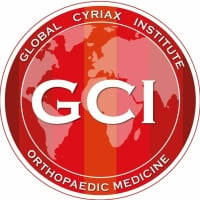
Cervical rotation manipulation
Cervical rotation manipulation for internal derangement
Ooh, that looks like torture :) Well, there's a hughe error in perception. It is perfectly possible to perform this manipulation in a gentle, patient friendly and safe way. It's much safer than certain popular chiropractic techniques. Did you know that most of the post-manipulative accidents happen after chiropractic techniques, without the use of a traction component?
Never perform any spinal manipulations before reaching a relevant diagnosis through a reliable functional examination. Respect at all times the specific indications, contraindications, the specific manipulative strategy and the red flags. When we manipulate in order to reduce an indicated cervical internal derangement, the traction component will be an important safety element.
Efficient clinical reasoning in the spine is not so easy. Did you know that a perfect solution to get more confident with diagnosis and treatment strategy in the spine, is to join the Mastermind private training in orthopaedic medicine?
Patient’s posture:
For a full rotation (don't exceed the normal range of motion of the patient!!) manipulation the patient’s head should be beyond the edge of the couch. Grip : for a rotation to the left the left hand is at the chin and the therapist’s feet point to the left. Sequence for half a rotation to the left : right hand at the occiput, right foot against the couch, left hand at the chin, left foot against the couch, knee flexion, arm extension, build in half a rotation, followed by a quick rotation thrust ; bring the head back to the neutral position, under traction, and release the traction by taking a small step backwards. The full rotation technique differs from that of half a rotation in so far as now the main part of the taking up of the slack is obtained by a trunk side flexion ; after assessing the end-feel, a quick manipulative thrust is given with both hands. Remark : both a hard and a muscle spasm end-feel indicate that the manipulative thrust should not be given.
